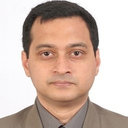Arthroscopic management of occult greater tuberosity fracture of the shoulder.
关键词
抽象
OBJECTIVE
The purpose of this retrospective study was to evaluate the early results of arthroscopic treatment in patients with missed occult greater tuberosity (GT) fracture of the humerus using the arthroscopic suture-bridge fixation technique.
METHODS
Between January 2007 and August 2010, we used arthroscopic suture-bridge fixation in 15 cases of missed occult GT fractures, which were referred to our department with persistent symptoms following trauma, despite physical therapy. Occult GT fracture was diagnosed with bone marrow edema seen on magnetic resonance imaging in all patients. There were 13 male and 2 female patients with a mean age of 45 years (range 31-67 years). Mean time period until the surgery following the initial trauma was 4 months (1.5-12 months). For the measurement of clinical outcomes, we assessed the range of motion and evaluated the University of California, Los Angeles (UCLA) American Shoulder and Elbow Surgeons (ASES) scores and simple shoulder test (SST).
RESULTS
The early clinical results were evaluated in these patients at a mean of 24 months (range 14-36 months) after surgery. All the patients were satisfied with the surgery. The mean UCLA, ASES, and SST scores improved from preoperative 15, 39, and 2 to postoperative 33, 91, and 11, respectively (P < .05). Mean forward flexion, abduction, external rotation at the neutral position, and internal rotation were improved to 159°, 155°, 24°, and L1, respectively, at the final follow-up.
CONCLUSIONS
In the occult GT fracture with persistent shoulder symptoms, arthroscopic suture-bridge fixation and early rehabilitation showed excellent clinical outcomes on a short-term follow-up study.
METHODS
Retrospective review, Level IV.


